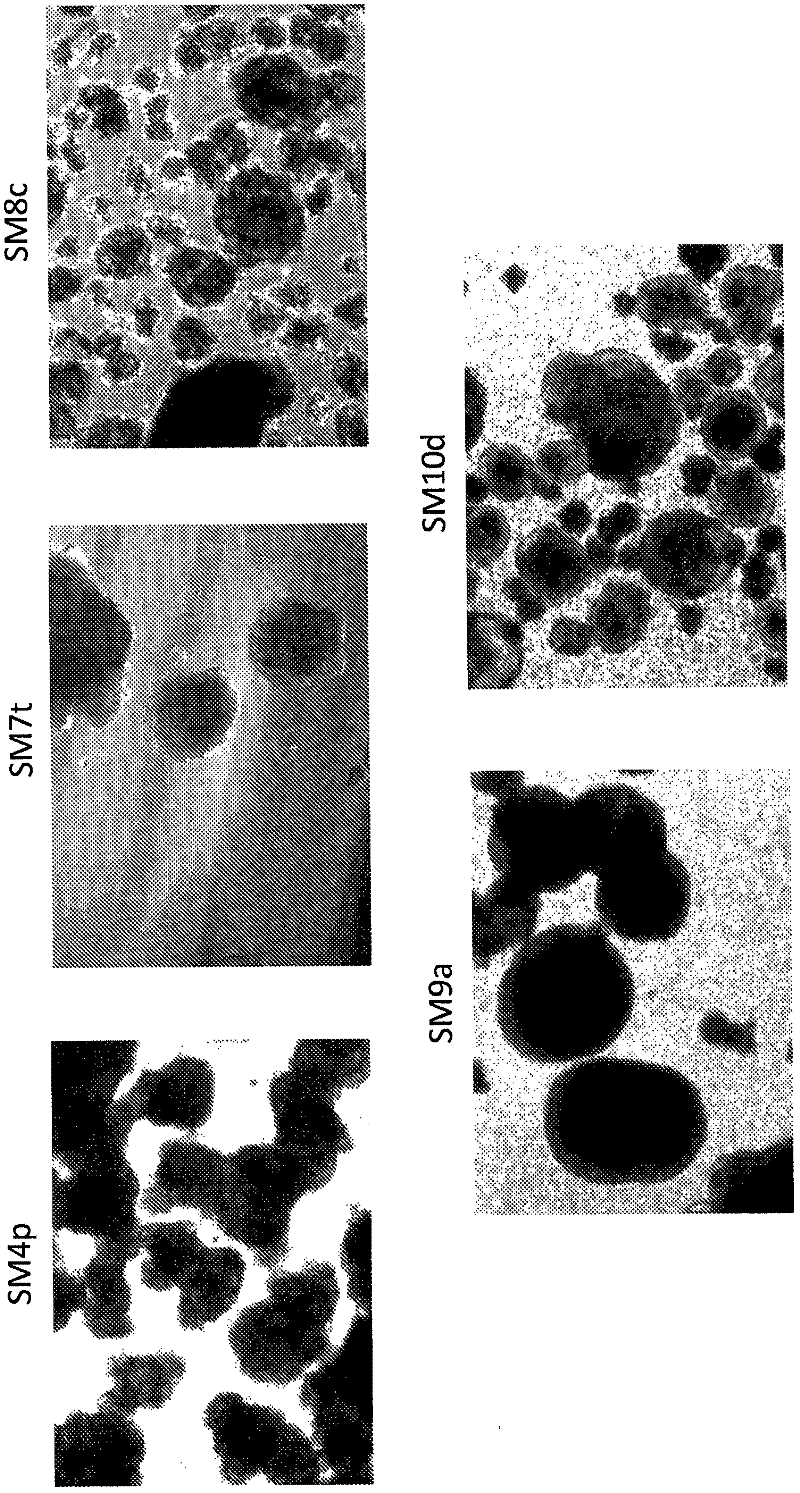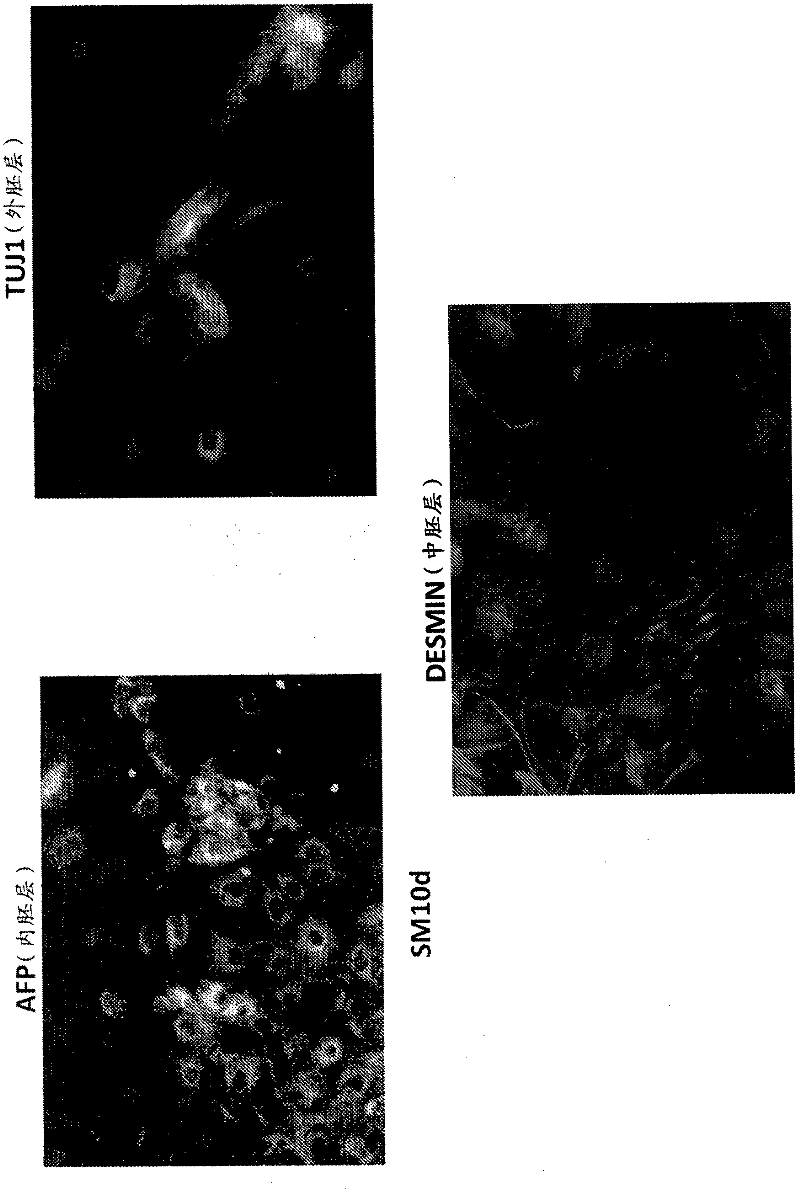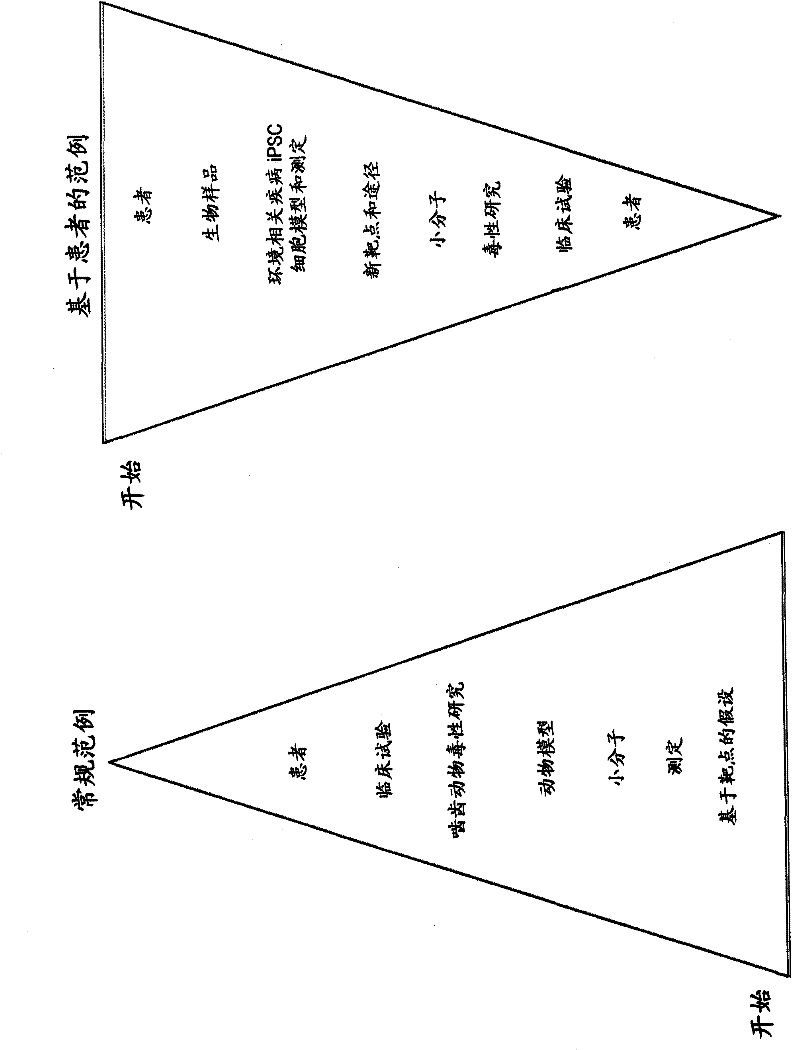Methods and platforms for drug discovery
A technology of cells and health conditions, applied in biochemical equipment and methods, testing pharmaceutical preparations, animal cells, etc., can solve problems such as side effects, and no evaluation of the effectiveness and toxicity of candidate drugs
- Summary
- Abstract
- Description
- Claims
- Application Information
AI Technical Summary
Problems solved by technology
Method used
Image
Examples
Embodiment 1
[0259] Example 1. Generation of iPSC lines from patients with spinal muscular atrophy
[0260] Spinal muscular atrophy (SMA) is a neuromuscular disease characterized by degeneration of motor neurons and is one of the leading causes of paralysis and death in children. The disease shows a wide range of severity affecting infants to adults and is divided into types I-IV based on age of onset and severity of symptoms: type I "infantile", onset at 0-6 months of age and generally fatal ; Type II "intermediate type", onset at the age of 7-15 months, unable to stand or walk, but has partial ability to maintain a sitting position; type III "juvenile type", onset at the age of 19 months to 17 years, with walking Partial ability, although possibly temporary; Type IV "adult form", with some muscular strength, but the genetic basis of which is unknown.
[0261] The molecular basis of SMA is associated with the motor neuron survival (Survival Motor Neuron, SMN) gene. The region of chrom...
Embodiment 2
[0266] Example 2. Identification of motor neurons that improve classification in patients with spinal muscular atrophy Analysis of sub- and cellular disease phenotypes
[0267] We sought to identify increased SMN2 in motor neurons derived from patients with SMA E7 Transcript level molecules. In principle, by promoting the transcription of SMN2, reducing the degradation of SMN2 mRNA or increasing splicing into SMN2 E7 SMN2 pre-mRNA fraction of mRNA to increase SMN2 E7 Transcript levels. SMA patient-specific motoneurons were obtained by first generating panels of iPS cell lines from Type I, Type II, and Type III SMA patients as described in Example 1, and then differentiating the iPSCs into motoneurons. Establishment of an SMA patient SMN2 minigene reporter iPSC line for easy readout of SMN2 in motor neurons prior to motor neuron differentiation E7 Transcript levels.
[0268] After obtaining parental informed consent, from about 30 type I, 30 type II and 30 type III SMA...
Embodiment 3
[0275] Example 3. From genes associated with idiopathic Parkinson's disease and Parkinson's disease Generation of iPSC lines from patients with defined mutations iPSC
[0276] Parkinson's disease (PD) is one of the most common neurodegenerative diseases of old age, affecting 1-2% of the population over 65 years of age. Clinical signs include: rest tremor, bradykinesia, and rigidity. We hope to generate iPSC models of PD patients to identify candidate therapeutic agents that can slow, halt or reverse PD progression.
[0277] From 10 healthy control subjects with no known PD family history, 10 patients with sporadic PD (patients each have a protein encoding α-synuclein (PARK1), parkin (PARK2), PINK1 ( Mutations in the PARK6) or LRRK2 (PARK8) genes, a total of 10 patients for each mutation) generated iPSC lines from skin biopsies. iPSCs were generated as described in Example 1. Then, dopaminergic neurons were generated by differentiating each patient iPSC line and control ...
PUM
 Login to View More
Login to View More Abstract
Description
Claims
Application Information
 Login to View More
Login to View More - R&D
- Intellectual Property
- Life Sciences
- Materials
- Tech Scout
- Unparalleled Data Quality
- Higher Quality Content
- 60% Fewer Hallucinations
Browse by: Latest US Patents, China's latest patents, Technical Efficacy Thesaurus, Application Domain, Technology Topic, Popular Technical Reports.
© 2025 PatSnap. All rights reserved.Legal|Privacy policy|Modern Slavery Act Transparency Statement|Sitemap|About US| Contact US: help@patsnap.com



